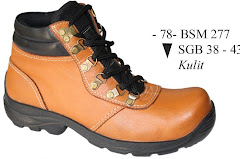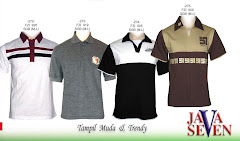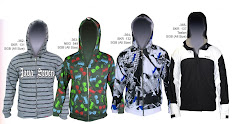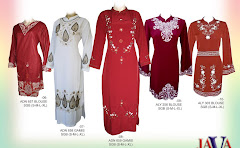Keterangan;dibuat sambil mendengarkan kuliah, belum diedit......
Catatan Pertemuan Pertama 03 Februari 2010
Dosen: Pak Jann
Pengetahuan: intangible, sulit diukur, sulit dikenali tetapi ada.
Knowledge management adl:
-sebuah proses utk menciptakan nilai dari asset2 intangible perusahaan
-mencipta, menyebarkan atau mentransfer knowledge dr brainware individu ke organizational actions yg dpt meningkatkan posisi kompetitif perusahaan dan memberikan suatu advantage marketplace.
-proses penggunaan sumberdaya2, penyebaran dan penggunaan aset2 knowledge for better work performance.
-merupakan faktor kunci kesuksesan dr perusahaan yg bersaing.
Knowledge worker : have positive attitude and spirit to share and improve his/her knowledge.
People is agent of change in each organization
Kesuksesan suatu Proses perubahan tergantung pada:
1. Komunikasi
2. Share Knowledge
3. kapasitas mengimplementasikn ide invatif
Buiding block dari suksesnya implementasi dan kreasi value adlah:
1. Knowledge utk pemahaman dan pemikiran
2. Pemanfaatan kemampuan manajemen perubahan.
Mnrt taksonomi ada 5 level belajar:
1. Explaining ideas or concepts: Interpreting, summarising, paraphrasing, classifying, explaining
2. Using information in another familiar situation: Implementing, carrying out, using, executing
3. Breaking information into parts to explore understandings and relationships: Comparing, organising, deconstructing, interrogating, finding
4. Justifying a decision or course of action: Checking, hypothesising, critiquing, experimenting, judging
5. Generating new ideas, products, or ways of viewing things: Designing, constructing, planning, producing, inventing.
Pedoman utk memahami:
1. masuk kelas terus
2. aktif mendengar dan belajar
3. membaca silabus sebelum kuliah dimulai
4. Aktif berpatisipasi dlm diskusi, dilarang menghina orang yg berbicara apapun, kita harus saling memotivasi agar terbiasa berbicara utk lbh baik.
5. treating all in class with respect
6. Participating in class/group activities with enthusiasm
7. Doing only class activities during class
8. Avoiding side conversations
9. Completing assignments on time
10.Keeping your cell phone on silent mode during class
Buku :
-learning to fly, collison,chris and parcel
-jann Hidajat: KM dlm konteks organisasi pembelajar
Assignment:
1. case/article analysis: analisa paper, hrs buat laporan : titile, abstract, introduction, metod, result, discussion, referensi
2. case/article oral presenttion
3. writing paper
Attendance:
Bobot:
-individual task and test itt:30 points
-individual participation and discussion in class ipd:20 points
-groups task/cases, participation and presentation cap:20 point
-individual mid test and final test imt:30 points
KUliah pagi tiap kamis : 8-11
New Paradigm in Knowledge Era :
manusia sbg Human capital, yg bisa dijadikan sbg source of knowledge (beda manusia sbg sumber daya)
Knowledge Era:
1. Speed of change : perubahan yg cepat
-man power mjd mind power
-multicareers : jabatan bs hilang krn bisa diganti mesin/komputer
2. Complexity : dunia makin kompleks
- growing, global market, less number
3. uncertainties: no safety nets, job losses, real income drop, technofear
SOLUTIONS????
-continous Learning : analytical thinking, creative thinking, how to use own.
Knowledge Era?
The most important and significant asset : knowledge (tacit and / explicit knowledge) which are embedded in knowledge workers.
people bs sbg asset bisa sbg beban, bila salah mengelola manusia maka akan mjd beban
Data-informasi-idea-knowledge-wisdom-innovation
What is knowledge?
a.justified belief that increases an entity's capacity for effective action (ikujiro nonaka,1994)
b. knowledge is a capaccity to act (Eric Sveiby)
K as the asset?
Living Asset?
1. Living or Intangible asset (human brain=knowledge machine)
2. Non Living or tangibel asset (money, car,...)
Knowledge Asset Characteristics?
1. K is a main economic resource
2. K dissemination is not restricted by space and time
3. K ...............................by rules or regulation
4. Value and product price is determined by K
5.
6.
7.
8.
K era issues?
Critical Issues in K era?
Living Company???
K-lost??????? died, move to others
K workers?
1. mature: rasional, mandiri, tahu diri,
2. global insight
3.
From learning organization to KM to K innovation management
-LO+process and technology -->KM + innovation management --> K innovation management for marketable goods and services
Organization Dynamic-10 years cycle:
1. cost
2. quality
3. flexible
4. innovation
5. learning organization
The real question is: how can leader develop K workers and leading the change to create and deliver result?
Rabu, Februari 03, 2010
Pengembangan dan Inovasi Knowledge Management (ke-1)
Langganan:
Posting Komentar (Atom)









 Open all
Open all Close all
Close all
Tidak ada komentar:
Posting Komentar